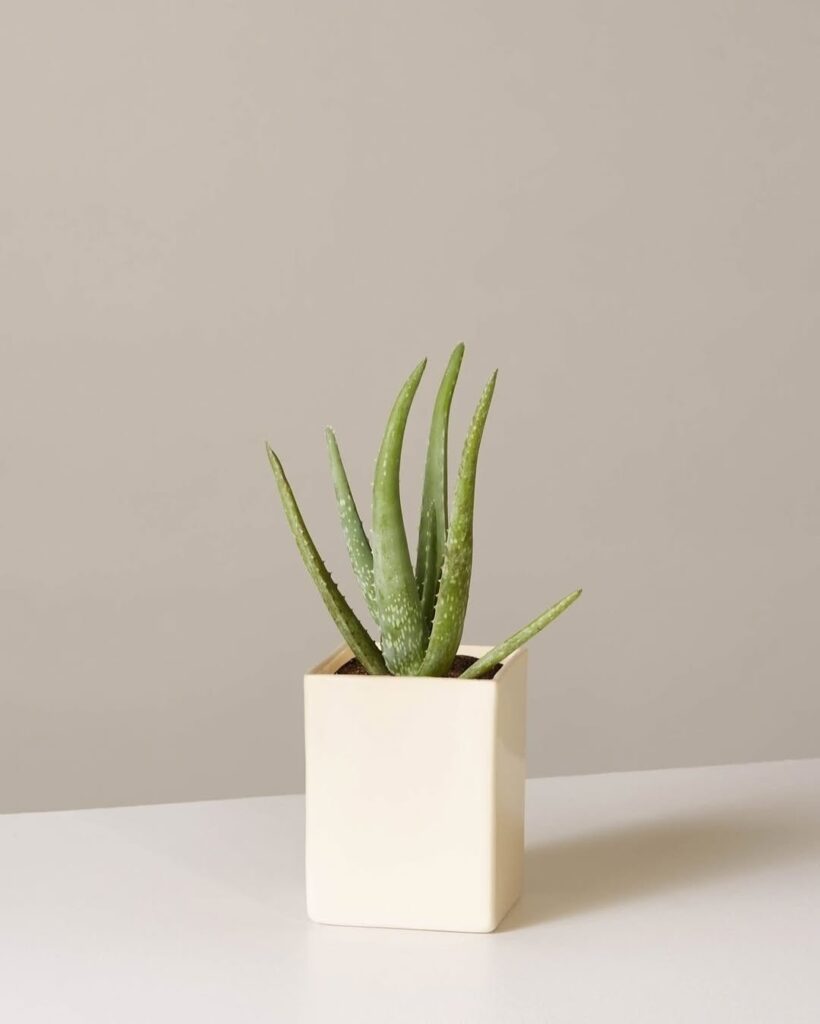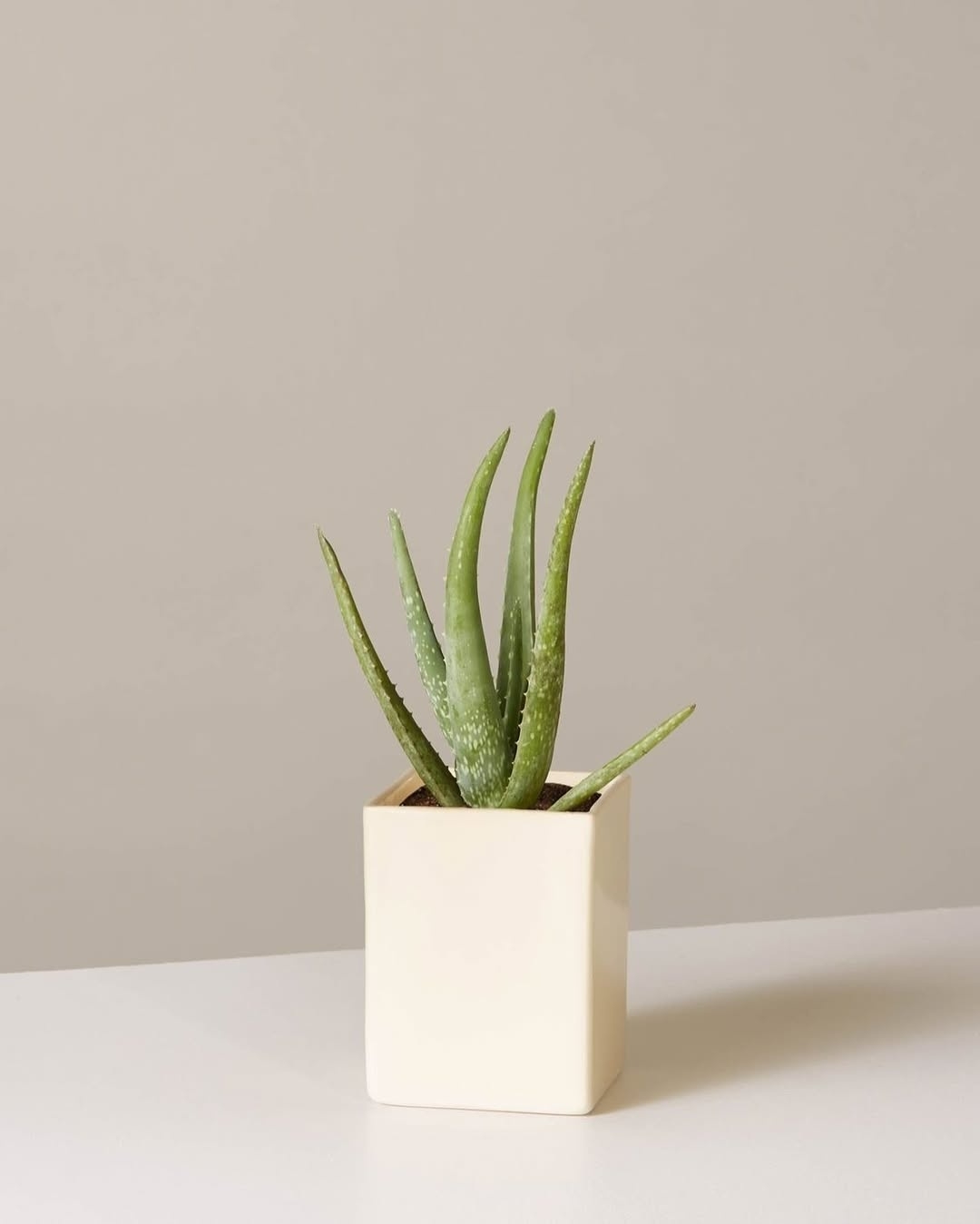Aloe vera is a versatile and easy-to-care-for plant that thrives in both indoor and outdoor environments. Known for its healing properties, this succulent is not only beautiful but also practical. Whether you’re a seasoned gardener or just starting, learning how to grow and care for aloe vera will allow you to enjoy its benefits for years to come.
Growing aloe vera is as simple as long as you meet its basic needs. In this guide, we’ll explore the essential aspects of aloe vera care, from selecting the right pot and soil to dealing with pests and diseases. Understanding the specific requirements of this hardy plant will ensure its health and longevity.

Understanding Aloe Vera: A Natural Healer
Aloe vera, a succulent plant species, is renowned for its thick, fleshy leaves and its ability to store water. It is native to arid climates, particularly in Africa, and is widely cultivated for both ornamental and medicinal purposes. The gel inside its leaves is packed with nutrients and is often used in skin care, burns, and other therapeutic treatments.
Before starting your aloe vera journey, it’s important to recognize the basic characteristics of this plant. Aloe vera plants typically have long, narrow leaves with jagged edges, which can range in color from green to a bluish tint, depending on sunlight and care. Aloe vera is known for its drought resistance, making it an ideal plant for busy gardeners or those with limited water access.
To grow healthy aloe vera, ensure you give it enough space to grow. The plant can reach up to 24 inches in height and spreads widely, making it suitable for both small pots or garden beds.
Choosing the Right Pot and Soil for Aloe Vera
The key to successful aloe vera growth begins with selecting the proper pot and soil. Aloe vera prefers well-draining soil that allows excess water to escape, preventing root rot, which is a common issue in over-watered plants. A mix of cactus or succulent soil, which is designed for good drainage, is ideal for aloe vera.
When it comes to choosing a pot, make sure it has drainage holes at the bottom. Aloe vera doesn’t like standing water, and proper drainage is essential for the health of the roots. A pot made of clay or terracotta is a great choice because these materials help the soil dry out more quickly. Avoid using a pot that is too large, as this can hold excess moisture, making the soil too damp for aloe vera to thrive.
For soil, opt for a mix that drains quickly but retains enough moisture to nourish the plant. You can create your own mix by combining equal parts of sand, perlite, and potting soil. This combination will ensure proper drainage while providing some moisture retention for the plant’s roots. Always check the soil’s moisture before watering and avoid keeping it soggy.
Light and Temperature Requirements for Aloe Vera
Aloe vera thrives in specific lighting and temperature conditions. To keep your plant healthy, follow these guidelines:
Light Needs:
- Aloe vera prefers bright, indirect light.
- Direct sunlight can scorch the leaves, causing them to turn brown or red.
- For indoor plants, place aloe vera near a south or west-facing window for optimal sunlight.
- Outdoor aloe vera can be placed in full sun but should be shielded from the harsh midday rays.
Temperature Needs:
- Aloe vera thrives in temperatures between 59°F and 77°F (15°C to 25°C).
- Cold temperatures below 50°F (10°C) can damage the plant, so avoid placing it in areas prone to frost.
- If grown outdoors, bring the plant inside during colder months to prevent frost damage.
- Drafty areas like near air conditioners or windows should be avoided.
If sunlight is insufficient indoors, consider using a grow light to supplement natural light.
Watering Your Aloe Vera: Finding the Balance
Watering is an important aspect of aloe vera care. Here’s how to get it just right:
Watering Frequency:
- Water your aloe vera once every two to three weeks during the growing season (spring and summer).
- In the winter, reduce watering to once every three to four weeks, as the plant enters dormancy.
How to Water:
- Always allow the soil to dry out completely between waterings.
- Avoid watering the leaves, as this can cause rot. Water the soil directly instead.
- Use your finger to check the soil—if it feels dry about an inch down, it’s time to water.
- Empty any water that collects in the saucer beneath the pot to avoid root rot.
Water less frequently than you think, as overwatering is a common issue with aloe vera care.
Feeding and Fertilizing Aloe Vera
Aloe vera doesn’t require much fertilizing, but providing occasional nutrients can help it thrive. Here’s how to feed your plant properly:
When to Fertilize:
- Fertilize aloe vera during the growing season, which is typically in spring and summer.
- Avoid fertilizing during the fall and winter when the plant is dormant.
How to Fertilize:
- Use a balanced, diluted liquid fertilizer or a slow-release fertilizer designed for succulents and cacti.
- Apply fertilizer once every 4-6 weeks during the growing season.
- Avoid using fertilizers high in nitrogen, as this can encourage soft, weak growth.
Aloe vera doesn’t require frequent feeding, so be cautious not to over-fertilize, as this can lead to burning the roots or excessive, unhealthy growth.
Dealing with Pests and Diseases
Aloe vera is relatively pest-resistant but can occasionally suffer from pests or diseases. Proper care and vigilance can help you avoid these issues.
Common Pests:
- Mealybugs: These small, white, cotton-like pests can attack aloe vera. Use rubbing alcohol on a cotton swab to wipe them off.
- Aphids: Aphids can be controlled by spraying aloe vera with a mixture of water and dish soap.
Common Diseases:
- Root rot: This is the most common disease, caused by overwatering. To prevent it, ensure the pot has adequate drainage and let the soil dry out completely between waterings.
- Leaf spot: Fungal infections can cause dark spots on the leaves. Avoid getting water on the leaves and ensure proper air circulation.
Regular inspection of your aloe vera for pests and diseases is important. If you spot an issue, address it immediately to prevent it from spreading.
Repotting Your Aloe Vera
Repotting aloe vera is a straightforward process, but it’s essential to do it correctly to avoid damaging the plant. Here’s how and when to repot your aloe vera:
When to Repot:
- Aloe vera should be repotted every 2 to 3 years or when it outgrows its current pot.
- Repot if the plant has become root-bound, meaning the roots have filled up the pot and are growing out of the drainage holes.
How to Repot:
- Choose a slightly larger pot than the current one, ensuring it has drainage holes.
- Gently remove the aloe vera from its pot, shaking off excess soil.
- Place the plant in the new pot and fill in with a well-draining soil mix.
- Leave the plant to settle for a day or two without watering to allow the roots to adjust to the new pot.
Avoid repotting during the winter when the plant is dormant. Instead, do it during the growing season for optimal recovery.
Using Aloe Vera in Home Design
Aloe vera can be a beautiful and functional addition to your home decor. Here’s how you can incorporate it into your space:
Aloe Vera as a Decorative Plant:
- Place aloe vera in stylish pots to complement modern, minimalist, or boho home decor styles.
- Aloe vera is perfect for shelves, countertops, or windowsills where it can receive ample light.
- It works well as a centerpiece on dining or coffee tables due to its unique form and natural aesthetic.
Benefits in Design:
- Aloe vera purifies the air, making it not only a visual asset but also improving indoor air quality.
- Its easy care makes it a great choice for busy homes or offices, providing greenery without much effort.
Incorporating aloe vera into your home design can bring a fresh, natural element to your space while benefiting from its air-purifying properties.
Propagation: Growing More Aloe Vera
If you want to grow more aloe vera, propagation is a simple and effective method. Here’s how to propagate your aloe vera plant:
Propagation Methods:
- Offsets (Pups): Aloe vera naturally produces small offshoots or pups at the base of the plant. These pups can be removed and planted separately.
- Leaf Cuttings: Though not as common, aloe vera can be propagated using leaf cuttings. However, this method takes longer and is less reliable than using pups.
Steps to Propagate Aloe Vera from Offsets:
- Remove the pup: Gently pull the pup from the main plant. If it’s attached by roots, use a clean, sharp knife to cut it away.
- Let it callous: Allow the pup to dry and form a callous over the cut surface for a few days.
- Plant the pup: Place the calloused pup in a new pot with well-draining soil and water sparingly until it begins to establish roots.
Propagation is an excellent way to grow new aloe vera plants, and it’s a rewarding process that doesn’t require much effort.
Final Thoughts
Growing and caring for aloe vera is straightforward and requires minimal attention. By providing the right light, water, and soil, you can enjoy a thriving aloe vera plant in your home. Whether you’re using it for its medicinal benefits or as a decorative piece, aloe vera makes a great addition to any space.

I’m Shofi, a passionate gardener and blogger. I have 10+ years of experience in gardening and hold certifications in horticulture and garden design. I share my knowledge and skills through my garden blog to inspire and educate others on the joys of gardening. I try to provide valuable information and create a community for gardeners of all levels to connect and learn. My ultimate goal is to inspire others to start their own gardens and connect with nature.

